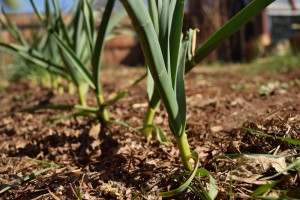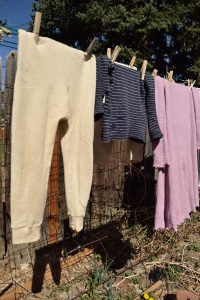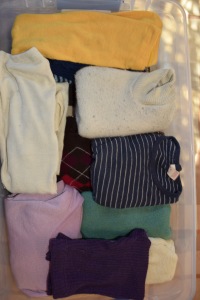The air is perfumed with the sweet scent of early bulbs and blooms, the fruit trees are unhurriedly and timidly revealing bits of color on their still bare branches, wary of the frosty nights that frequent Colorado late into spring.
Thin blades of grass, jagged edges of peppery arugula, sturdy tips of garlic, and delicate spring greens push their way through the earth, seeking sunshine but sometimes greeted with heavy, wet snowflakes or icy raindrops or hail instead.
Mornings are still cold enough to require a full ensemble of winter attire, but by mid-morning we peel off our layers and bask in warm sunshine. The kids blissfully spend their days outdoors and can’t be bothered to come indoors until bedtime. Springtime is, unanimously and unquestionably, one of the most loved seasons for our family.
Tempted to pack away all of our woolen base layers, mittens, hats, and coats for the season, a few bitterly cold spring mornings and late snowstorms pay us a visit to remind us that it’s not quite time yet. It is the season of spring cleaning and preparing for warmer weather, however, and with woolens for the entire family that I am determined not to be chewed to bits by moths while we play in the sun all summer, storage consideration and preparation is necessary.
Tips on storing wool:
- Wash all woolen apparel prior to storing away. This is of utmost importance. There’s nothing pests love more than dirty, smelly wool. Wash it by hand, throw it all in the machine (on delicate/wool cycle, cool water, not tumble dry, please!), or drop it all off at the dry cleaner, but find a way to get it all fresh and clean before packing it away. Wash it now, before you get caught up in that wonderful slowness that is summer, and you’ll be glad you did when you open up that box in the fall.
- Dry your wool completely prior to storing it- this is especially important if you intend to store your wool in any container that does not allow for much air circulation, such as plastic. To avoid stretching the wool, we always recommend reshaping garments and laying flat to dry. Never tumble dry your wool, of course, unless you’d like it to fit your infant instead of you.
- Create an effective moth barrier as a storage container. This means a container that allows some air circulation but discourages woolens as landing pads for flying insects. Some people store their wool in cedar chests, others in cotton bags or pillowcases, plastic storage totes, or even ziplock bags.
- Use dried herbs to confuse the moths. The lovely aroma of fragrant dried herbs such as lavender and eucalyptus is sure to leave nesting-ground-seeking winged pests perplexed and frustrated, leaving your favorite woolies intact while the pesky moths search for a more desirable, unscented location to lay their eggs. Sachets filled with dried fragrant herbs can be placed inside of the storage container along with the wool.
Why all this effort to store away my woolen clothes?
Can’t I just throw them in a heap in the closet or shove them in a box downstairs until Labor Day?
If you’re asking this question, then it’s likely you’ve never pulled out your favorite wool sweater on the first cold day of autumn only to find unsightly holes chewed throughout it. Properly cared for and properly stored, wool apparel can be passed down to younger children and used for years to come. Moths and other pests use wool and other animal hair fibers to as a nesting ground for their hatchlings to feast upon once born. Moth damage can be devastating, particularly considering the investment that is a wardrobe of woolen apparel .
Of course, if your family enjoys nature activities such as hiking and camping during the summer, you may not even need to store your woolen underwear layers, as they make lovely base layers for all sorts of outdoor activities and are essential for camping in regions where the evenings are chilly. We do still recommend laundering and properly storing heavier wool garments, such as wool coats, hats, mittens, and sweaters, since it’s less likely that you’ll be needing them during summer.
What to do if you discover moth eggs or larva on your wool:
Destroy all eggs or larva by thoroughly washing, soaking the wool in water and wool detergent, hanging the dry wool in the sun (do not hang wet wool to dry), or freezing the wool. Be certain to thoroughly clean all storage containers- vacuuming is usually effective.
What to do if you find the devastating aftermath of moths but no larva or eggs:
After finding a shoulder upon which to shed plenty of tears because your expensive woolen clothes have been ruthlessly chewed apart by impossibly small, seemingly invisible, and exceedingly elusive invaders, come back to your senses and assess the damage. Many moth holes in knits can be easily repaired with some basic sewing skills. (More on that in an upcoming post!)
In conclusion, please be sure to take the extra effort of properly cleaning and storing all of your precious wool clothing before the onset of summer. You’ll save both money and tears later on, and there are few moments in life more rewarding than opening a chest full of clean, lavender scented, nearly folded wool clothes that are all in one piece and ready to bundle you up when the crisp autumn air reminds you that a cozy sweater would be just right.
Happy Springtime!





